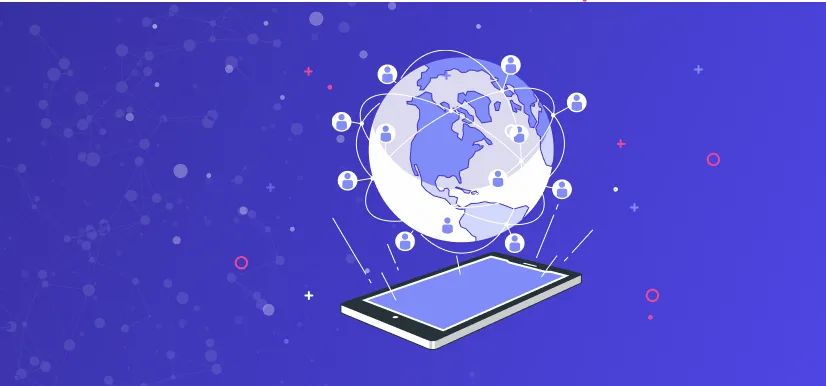- JAMstack
Edge Experience: Edge Computing Predictions for 2023


The year 2023 will prove to be the real inflection for edge computing. There are emerging functional applications where this architecture can offer real advantages. The COVID-19 pandemic has forced companies to rethink how development, marketing, and other teams work when everyone's remote. Finally, the economic downturn and future recovery will put pressure on businesses around costs and efficiency.
1. Long-Term Remote Working Will Increase the Importance of Application Performance
While an application’s functionality is very important, development and product teams have equally started to value non-functional areas, such as performance, usability, accessibility, and UX. The focus on performance has increased as the percentage of mobile users is growing in the last years, accounting for 48.62% of global traffic.
And due to the COVID-19 pandemic more and more people expect to work remotely, even in rural areas. This will increase the demand for online services and content, which will boost the importance of application performance and security and the usage of CDNs and their edge services.
2. Economic Recovery Will Increase the Importance of Serverless Solutions
Developers are increasingly using FaaS platforms and JAMstack for coding. An important benefit is the cost-saving. In a post-pandemic economy, companies will need to be more cost-effective.
But also productivity and efficiency will be important. And FaaS and JAMstack provide simpler methods for coding and easier scaling capabilities as monolithic or own solutions.
This combination of benefits will drive the market share of the overall FaaS market, including serverless functions on the edge.
As serverless functions on the edge providers have grown in numbers and reached a mature technical stage they will benefit more from the positive trends in the FaaS market.
3. 75% of Dev Orgs Will Use Low-Code Platforms
"Tech-savvy“ millennials are expected to cover 75% of the workspaces by 2025 and adoption of tech is visible in almost all the workspaces. Cross-functional teams will become the norm and so the need for tools to support this. Related to this, according to Forrester's 2021 predictions for software development organizations will accelerate the adoption of low-code platforms.
Low-code and no-code platforms enable teams to collaborate, build and deploy new apps faster and more efficiently.
Edge providers like Cloudflare or Netlify offer low and no-code solutions for a wide variety of business needs from FaaS to security.
4. The Future of E-commerce is Headless
In 2020 e-commerce companies have grown amid the COVID-19 pandemic as more and more people switch to online shopping. In a post-pandemic scenario, many companies will continue to benefit from the positive trends that emerged during the outbreak.
JAMstack is growing fast as the benefits are better performance, reliability, security, developer workflows, and fewer costs.
The choice of headless CMS for JAMstack websites such as Contentful or CoreDNA is exploding. But also new headless e-commerce solutions are available and online shop providers like Shopify offer APIs to enable developers to build JAMstack e-commerce omnichannel solutions.
JAMstack e-commerce relies on CDNs and their edge services to provide better performance, reliability, and security.
5. Edge Hosting Will Evolve Into a Full-Fledged Marketplace
The need to deliver application and data resources to edge locations will increase the demand for edge hosting services. Content delivery networks like Akamai are starting to target edge computing demands. On the other hand, Edge hosting services like Stackpath and MobiledgeX make it possible to deploy services on the edge.
Forrester predicts an explosion of growth in edge computing, meaning more growth for companies that have invested in cloud-like solutions for edge computing and content delivery, not centralized data centers.
6. AI Will Shift to Edge Computing
"Edge application intelligence will blossom in 2021 and beyond to accelerate digital transformation, especially in industries that must bridge the physical and digital worlds in real-time," Forrester said.
Instead of machine learning models being trained in the data center, learning will start to happen at the edge as new power-intensive and specialized hardware will be deployed on the edge.
Edge computing is likely to increase operational reliability, enable real-time predictions, and improve data security. 5G, which promises lower latency and enhanced coverage and responsiveness may further increase edge computing’s efficiency.
Conclusion
The year 2023 will prove to be the real inflection for edge computing. After 2020 and the COVID-19 pandemic companies will put the focus on serverless solutions, performance, and security.
JAMstack, low-code platforms, and no-code solutions will improve the speed of development and the collaboration between teams in remote working environments. And serverless solutions, including headless e-commerce, will increase the demand for edge computing as companies will need to be more cost-effective, efficient, and performant.
Finally, the need to deliver application and data resources to edge locations, even rural areas, and the shift of AI to edge computing will increase the demand for edge hosting services.
At Ninetailed we are pioneering the edge experience unlocking the benefits of edge computing for our customers. Our platform is built with serverless edge technology and our learnings have proven the multiple benefits of edge computing. According to our experience, the move from the cloud to the edge has changed and improved the way our cross-functional teams build and deploy apps.
Learn everything you need to know about MACH architecture

